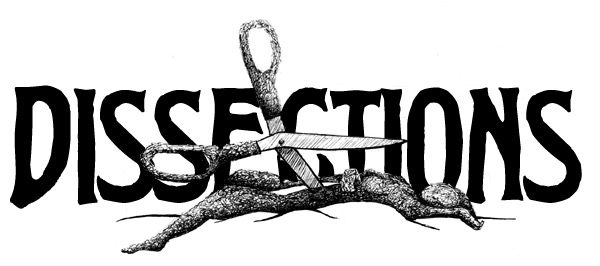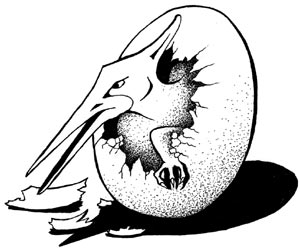[an error occurred while processing this directive]


Posthuman Gothic
Anya Heise-von der Lippe (2017)
University of Wales Press
Review by Gina Wisker
Beginning with Frankenstein’s posthuman challenge to what it means to be human, Anya Heise-von der Lippe’s fine collection establishes the field, charactering and problematising the ‘posthuman Gothic’. The book gathers a range of established and newer, international authors, revivifying and offering new, theorised perspectives on old favourites, monsters, vampires, some posthuman, some recuperated (I Am Legend), some popular culture, TV, (True Blood). While Gothic treatment of gender too easily slips into the merely monstrous, this collection focuses it as comment on relationships, power, identity, politics (Top of the Lake), insightful in dealing with representations of and by women, and becoming, a central characteristic of the posthuman Gothic.
It is the year of Frankenstein, 2018, and Anya’s fine edited volume of work on the posthuman tracks our fascination with its turns and twists, its origins two hundred years ago in making us see ourselves anew – and the sight is rarely pretty but always enlightening.
There have been several earlier books by Cary Wolfe (2010) and Stefan Herbrechter (2013) asking what posthumanism is, and Rosie Braidotti’s 2013 The Posthuman theorises its role in scrutinising the dignities and comforts of the assumptions of the human. This collection from Anya Heise-von der Lippe takes the link between those two troubling perspectives, posthuman and Gothic, and explores ways in which TV, film and novel use these terms, their slippages, gaps and potential, to encourage critique and the positive construction, the becoming offered in the term, in practice in text.
This is not just the usual line up of monsters, from doppelgangers and female monsters on the TV (Maria Marino-Faza), recuperating vampires in I Am Legend (Chris Koenig-Woodyard), zombie apocalypse (Michael Sean Bolton), but it also calls into question how we define what it means to be human, whether and how that is outdated, has problematic tinges of disgust and terror at anything/anyone other. It considers how perhaps it will be necessary, even desirable, to embrace the other, the alien constructed from our disgust, desire and terror, as an actual development of the self, as the Alien series and I Am Legend suggest. The consistent and varied exploration of texts with these possibilities of becoming in mind, such as in Antonia Perikou’s piece on Margaret Atwood’s MaddAddam, causes us to substantially rethink the posthuman. On the one hand, it means beyond, while that which it leaves behind is defunct, destroyed, and on the other it is about a perhaps terrifying but necessary metamorphosing for survival and change.
The introduction sets out the challenges – Frankenstein, with its patches of body and writing, demands that we construct the text and the consideration of posthumanism itself as an ‘ethical demand that confronts texts with their own liberal humanist conservatism’ (p. 2). Readers have that job to do too, and the challenge to anthropocentric perspectives emerges through this Gothic critique, as both troublesomely undermining of what we take for granted and absolutely necessary, timely, crucial now.
A persuasive passage which introduces the drive of the collection for me is ‘It is this humanist baggage which ties Western thought to an anthropocentric perspective often perceived as universal, even if, as Rosi Braidotti points out, “[n]ot all of us can say, with any degree of certainty, that we have always been human, or that we are only that. Some of us are not even considered fully human now, let alone at previous moments of Western social, political and scientific history”’ (p. 3).
The challenge of the human and the whole enlightenment project following this insightful comment is that ‘both the sleep and the dream of reason create monsters’ (p. 3). The whole text always hovers between and balances the disturbing otherness exposed by the posthuman, and the need to wake up and see that notions of what is human are themselves complacent constructions – a very Gothic move.
Anya also argues in the introduction about the lack of Gothic consideration of the posthuman and the focus on the negative aesthetics approach of the Gothic in this area. We need to consider the challenge to an Enlightenment-asserted superiority of humans over animals and to the wholeness of the human body from technology as well, as e.g. in I Am Legend, to the presumed purity and fixity of what it means to be a version of human. These are all underlying fears and challenges running throughout the book, and in some of the texts they are also opportunities, moving beyond problematic challenges. The trajectory for the book moves from this recognition of the monstrous within the human at every turn to a celebration of the posthuman as a form of becoming, e.g. with MaddAddam and I Am Legend, even if this is also terrifying and disturbing. Anya also notes that ‘the posthuman Gothic makes us aware that the monstrous other is not only lodged within, but an essential part of our (human) identity construction. Posthuman monstrosity is an inherent feature of how we establish and discursively construct our humanity in a world that no longer allows us to perceive ourselves as whole and wholly untouched by the effects of our own (bio)technological involvements’ (p. 6). She sees its potential as an ‘often subversive, metanarratively aware form of textuality’, which offers a suitable starting point to explore both the concerns about the posthuman Gothic, and the forms which this takes in the texts discussed in the collection.
In four parts, the collection works organically, beginning with a destabilisation of the human, e.g. with vampires, zombies and genetically modified humans. Antonia Perikou notes how in Margaret Atwood’s MaddAddam the Crakers, genetically modified humans (and more), draw attention to the human as discursively constructed, with potential for utopian or dystopian futures. Lars Schmienk’s chapter on critical posthumanism takes up the vampire in Blade II, I Am Legend and Daybreakers to see it as a metaphorical figure enabling the exploration of a posthuman transformation category.
Part two is on ‘Undead’, concerning attempts at domesticating the vampire and zombie, and I Am Legend appears again in Chris Koenig-Woodyard’s chapter, while Erica McCrystal links vampires and hospitality in True Blood, and other essays look at The Vampire Diaries. In Part three, ‘Evolving’, Jane Campion’s Top of the Lake is discussed, as Amalya Ashman and Amy Taylor look at sexual trauma, fragmentation and how antipodean Gothic represents people’s struggles as mirrored in nature.
In Chapter 10 Donna Mitchell effectively and imaginatively explores Shelley Jackson’s Patchwork Girl as a metacritical hypertextual development of Frankenstein.
Many of the chapters and the texts dealt with in this collection leave troubling questions: ‘perhaps the parasites that seem to transform humans into zombies are simply interfacing with and awakening the monsters already within us’ (p. 32), suggests Michael Sean Bolton, while considering developments of the Alien series, focusing on Ripley 8: ‘Ripley’s posthuman monstrous clone/alien hybrid descendent. The hero has not only become posthuman, but now incorporates part of the monster.’ Becoming, moving on, not only recognises the monstrous and the alien hybrid creature cyborg self but celebrates it as survivor, as an example of mode of being, which Evan Hayles Gledhill suggests is validating ‘living otherwise’ to humanist values, so that we might ‘become heroic post humans’ (p. 227).
A rich A-to-Z cast of zombies, vampires, cyborgs, monsters
and new hybrid beings, Posthuman Gothic ranges thoughtfully,
rigorously and delightfully from Margaret Atwood’s MaddAddam
trilogy – looking backwards in a history placed in an uncertain
future, through I Am Legend, Alien, a huge focused
range of texts – and forwards to dystopian post-apocalyptic futures,
taking us through alien sex fiends to the zombie apocalypse (and beyond).
